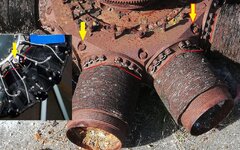MIflyer
1st Lieutenant
"My first thought was a sleeve valve Bristol."
There is the little problem of the utter lack of sleeve valves....
My guess is: Early Lockheed Hudson. (not illustrated).
But check with the guy who is building a 3D model of an R-1820.

There is the little problem of the utter lack of sleeve valves....
My guess is: Early Lockheed Hudson. (not illustrated).
But check with the guy who is building a 3D model of an R-1820.

